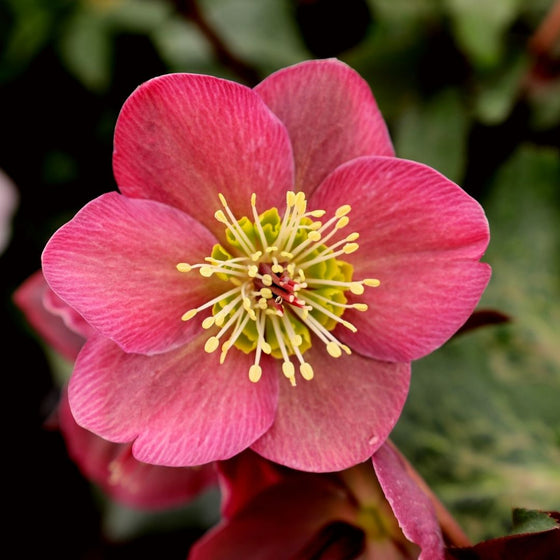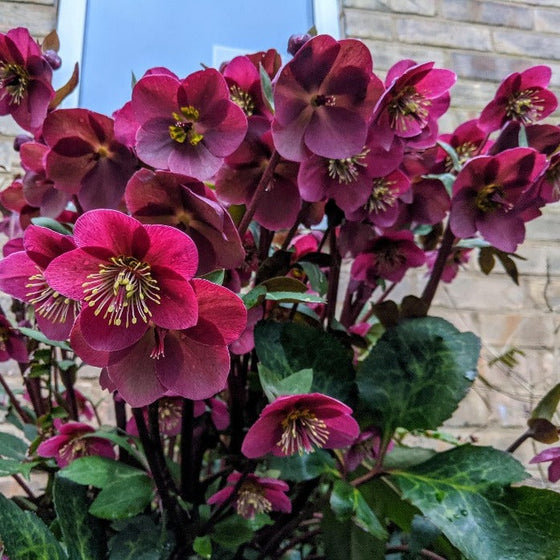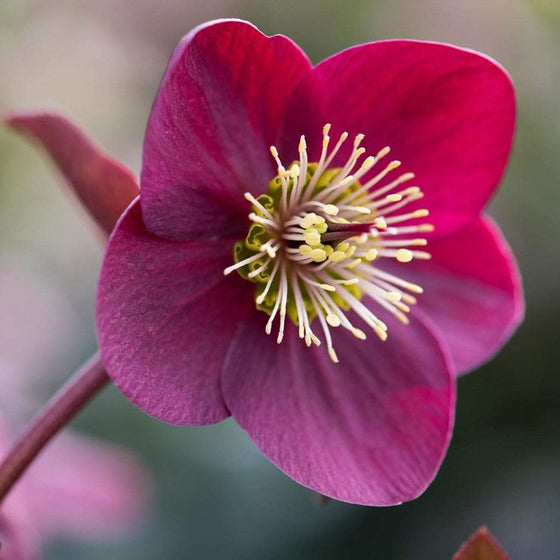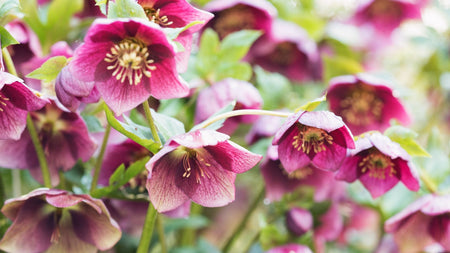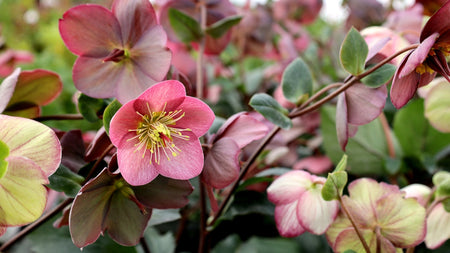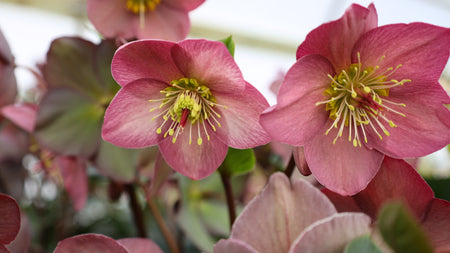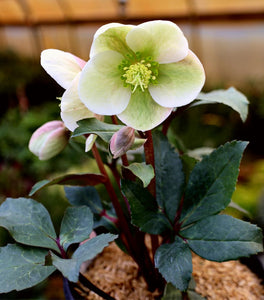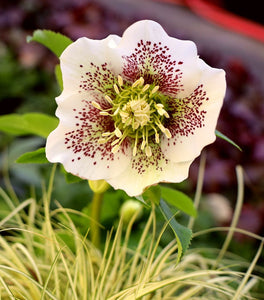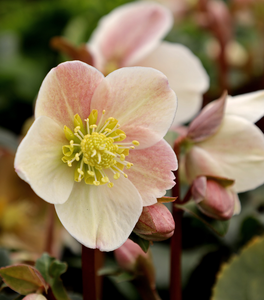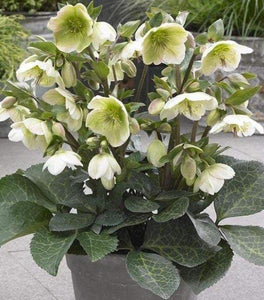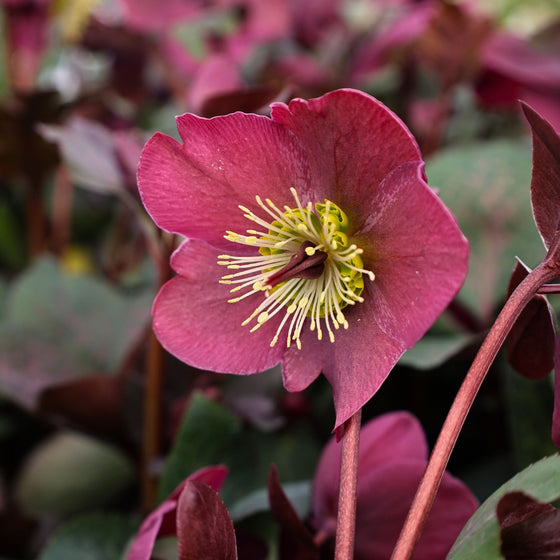
Images Depict Mature Plants
Winter-Blooming Evergreen Perennial with Striking Red Flowers
Early Blooms That Brighten the Winter Garden
Helleborus ‘Anna’s Red’ is a standout among Lenten Roses, offering jewel-toned blooms in rich shades of crimson and plum when little else is flowering. From late winter through early spring, its long-lasting blossoms rise above glossy evergreen foliage, adding elegance and color when gardens need it most.
Unique Color and Compact Growth
Reaching about 12 to 18 inches tall and wide, Anna’s Red forms a tidy, clumping habit that’s ideal for shade borders, woodland edges, and containers. Its flowers emerge on sturdy stems and gradually mature to deeper, velvety hues, making this hellebore one of the most dramatic winter bloomers available.
Tough, Evergreen, and Deer-Resistant
Once established, Helleborus ‘Anna’s Red’ is drought-tolerant and nearly indestructible. It’s evergreen in most climates, providing year-round interest through its leathery green leaves marbled with silvery veining. Naturally deer- and rabbit-resistant, this perennial is a dependable choice for low-maintenance landscapes and shady foundations.
A Shade Garden Essential
Anna’s Red thrives in partial to full shade, where many perennials struggle. Plant it beneath trees, alongside hostas, or near camellias for an elegant composition of texture and color. Its early blooms feed pollinators, awakening from winter dormancy, bridging the gap between winter and spring.
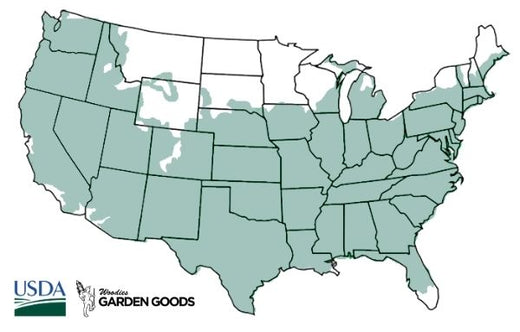
| Hardiness Zone: | 5-9 |
|---|---|
| Mature Height: | 12 to 18 Inches |
| Mature Width: | 18 to 24 Inches |
| Sunlight: | Full shade to Part Sun |
| Water Requirements: | Moderate; consistent moisture preferred |
| Flower Color: | Deep Red turning burgundy with age |
| Bloom Time: | Late Winter to Early Spring |
How to Care for Helleborus ‘Anna’s Red’ (Anna’s Red Lenten Rose)
Be sure to read our planting instructions to ensure a healthy and happy Helleborus ‘Anna’s Red’ plant for years to come!
How should I plant Helleborus ‘Anna’s Red’?
Choose a partially shaded to fully shaded site with rich, well-drained soil. Dig a hole twice as wide as the root ball and just as deep. Position the plant so the crown is level with the soil surface, then backfill with a mix of compost and native soil. Water thoroughly after planting. Space plants about 18 inches apart to allow room for mature growth and airflow. Apply a thin layer of mulch to retain moisture and suppress weeds but avoid covering the crown to prevent rot.
How often should I water Helleborus ‘Anna’s Red’ after planting?
Keep the soil evenly moist during the first growing season to establish a deep root system. Water once or twice weekly during dry periods, especially in summer or in container plantings. Once established, Anna’s Red is moderately drought-tolerant but appreciates consistent moisture. A 2-inch layer of mulch helps retain soil moisture and keep roots cool.
When should I fertilize Helleborus ‘Anna’s Red’?
Fertilize in early spring with a slow-release balanced fertilizer or organic compost as new growth emerges. This helps support blooming and lush evergreen foliage. A light midsummer feeding can be beneficial if the soil is poor, but in rich organic soil, annual composting around the base is usually sufficient.

When and how should I prune Helleborus ‘Anna’s Red’?
In late winter, before flower buds open, remove any old or damaged leaves to tidy the plant and showcase the new blooms. After flowering, trim spent flower stems at the base to direct energy into foliage and root growth. Avoid cutting back new leaves in summer, as they sustain the plant through winter. Regular cleanup keeps plants disease-free and looking fresh.

